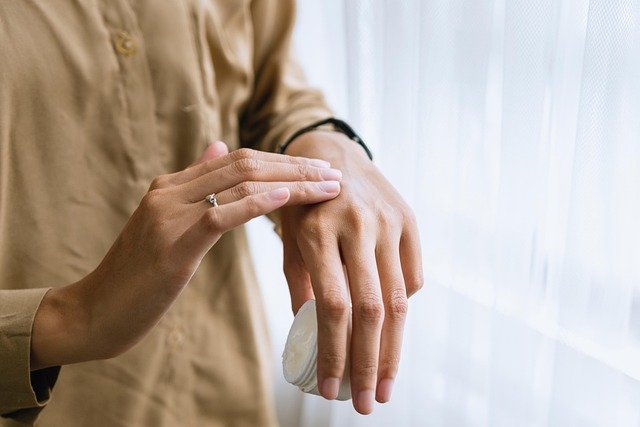Breathwork and stretching to reduce stress-related skin flare-ups
Stress can trigger or worsen skin flare-ups for many people. Breathwork and gentle stretching offer practical, low-cost ways to reduce physiological stress responses, support circulation, and improve mobility. Combined with consistent skincare and lifestyle habits, these practices can reduce the frequency and intensity of stress-related skin reactions over time.

Stress is a common trigger for skin flare-ups such as redness, acne exacerbations, and eczema aggravations. Beyond topical treatments, practices that reduce nervous-system arousal and support circulation can lower the intensity and frequency of these episodes. Breathwork and stretching are accessible tools that target stress physiology, promote blood flow, and complement good skincare. This article explains how targeted breathing and mobility routines may influence skin, and outlines practical ways to include them in daily self-care while attending to hydration, sleep, and nutrition.
This article is for informational purposes only and should not be considered medical advice. Please consult a qualified healthcare professional for personalized guidance and treatment.
How can breathwork calm skin-related stress?
Breathwork practices—like slow diaphragmatic breathing, box breathing, or 4-4-8 rhythms—encourage a shift from sympathetic (fight-or-flight) to parasympathetic nervous system activity. When the body downregulates stress hormones such as cortisol and adrenaline, inflammatory signaling that can provoke skin flare-ups may be reduced. Simple routines, such as five minutes of slow, nasal diaphragmatic breathing morning and evening, can lower perceived stress and heart rate. Regular breathwork supports overall circulation and can be combined with mindfulness to address both the physical and emotional aspects of stress-related skin issues.
How does movement support circulation and recovery?
Light-to-moderate movement increases blood flow to the skin, delivering oxygen and nutrients needed for repair and barrier function. Activities focused on mobility—slow flows, walking, gentle tai chi—promote lymphatic drainage and remove metabolic byproducts that might otherwise perpetuate inflammation. Recovery practices such as restorative stretching after exercise reduce muscle tension that can perpetuate stress responses. Incorporating brief mobility breaks during sedentary periods helps maintain circulation, which supports skin resilience and may help the skin recover more quickly after flare-ups.
How do stretching and flexibility affect skin resilience?
Stretching improves flexibility, reduces muscular tension, and supports better posture, which together can decrease chronic physical stress. Progressive, gentle stretching enhances tissue perfusion and can relieve areas of tightness that contribute to headache, neck tension, or jaw clenching—common stress manifestations that can indirectly worsen skin by increasing systemic stress. Regular stretching routines that focus on breath-synchronized movement reduce sympathetic arousal and support relaxation, which is beneficial for skin conditions sensitive to stress-related inflammation.
What role does hydration and nutrition play in skin outcomes?
Hydration and balanced nutrition are foundational for skin barrier integrity and recovery. Adequate water intake supports circulation and the delivery of nutrients to the skin, while a diet rich in whole foods—vegetables, lean protein, healthy fats, and antioxidants—helps modulate inflammation. Micronutrients like zinc, vitamin C, and omega-3 fatty acids contribute to repair processes. Combining breathwork and movement with consistent hydration and nutrient-dense meals creates a systemic environment more conducive to skin healing and less prone to stress-triggered flares.
How can exercise, strength, and endurance influence skin health?
Regular exercise improves cardiovascular fitness, circulation, and metabolic regulation, all of which support skin health indirectly. Strength training and endurance activities increase vascular tone and promote efficient nutrient delivery and waste removal at the tissue level. It’s important to balance intensity: very high-intensity exercise can temporarily increase stress hormones, so include adequate recovery, hydration, and cooldown stretching. Sweat can help clear pores, but post-exercise cleansing and sunscreen for outdoor activity are important to prevent irritation and sun-related damage.
How do sleep and skincare routines complement breathwork and stretching?
Quality sleep is central to skin repair; insufficient sleep heightens inflammatory responses and impairs barrier recovery. Nightly routines that include calming breathwork and gentle mobility before bed can improve sleep onset and continuity. Complement these practices with consistent skincare: gentle cleansing, appropriate moisturization, and daily sunscreen for daytime protection. For stress-related flare-ups, choose non-irritating formulations and avoid overuse of harsh active ingredients during flare periods. Coordinated attention to sleep, breathwork, and skincare fosters a more stable skin environment.
Conclusion Breathwork and stretching are practical, low-risk strategies that target stress physiology and physical tension—both common contributors to stress-related skin flare-ups. When combined with hydration, balanced nutrition, appropriate exercise, restorative sleep, and a consistent skincare routine, these practices form a holistic approach that supports skin resilience. Results vary by individual and often emerge with consistent, regular practice rather than one-time interventions. For persistent or severe skin conditions, consult a healthcare or dermatology professional for personalized evaluation and treatment recommendations.





